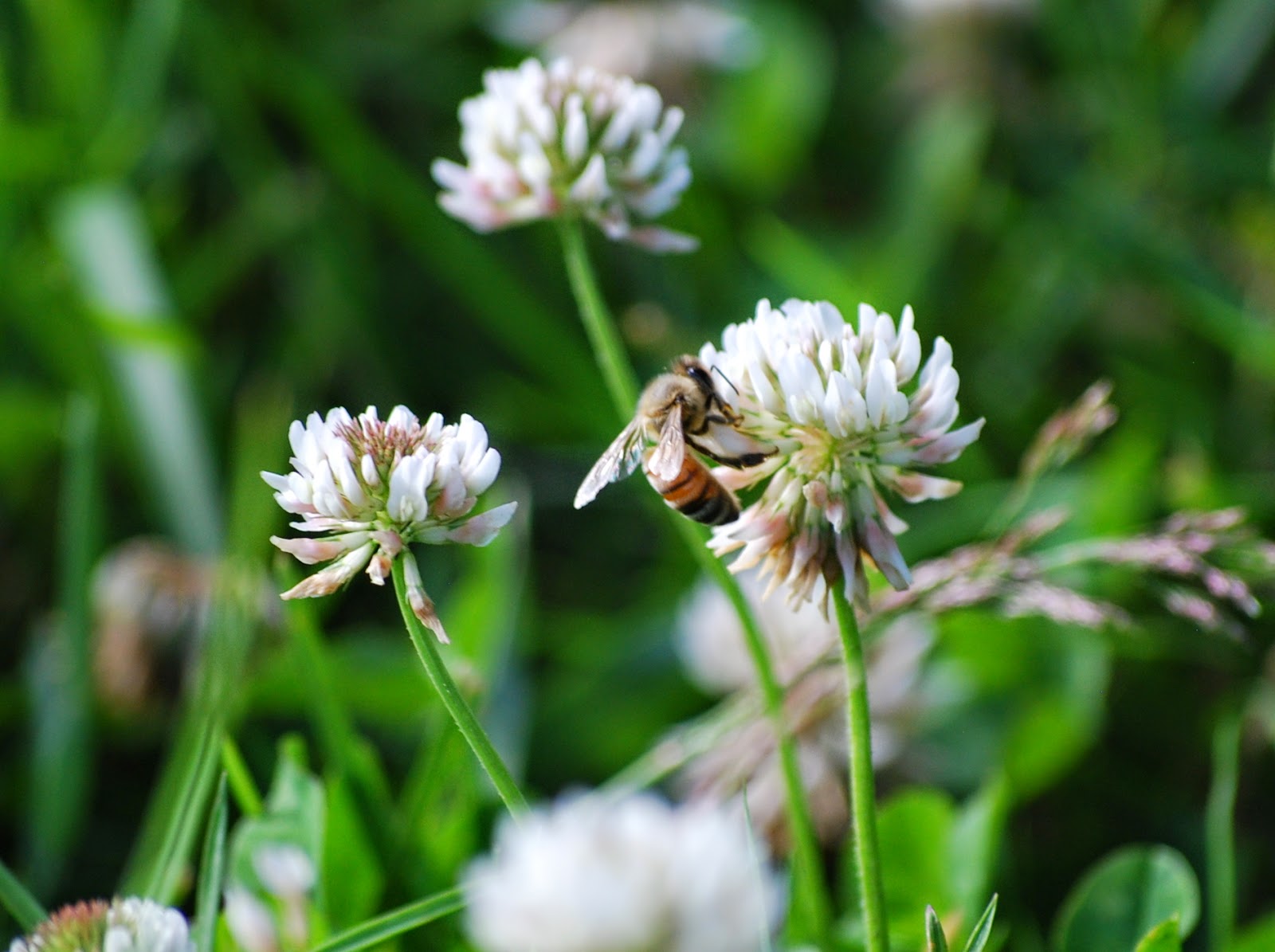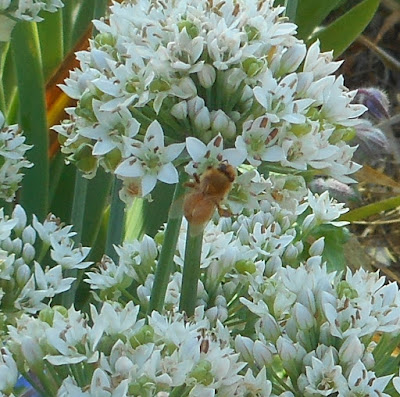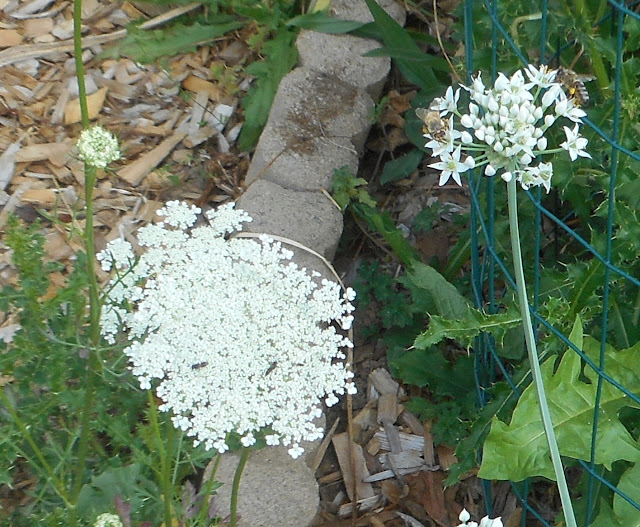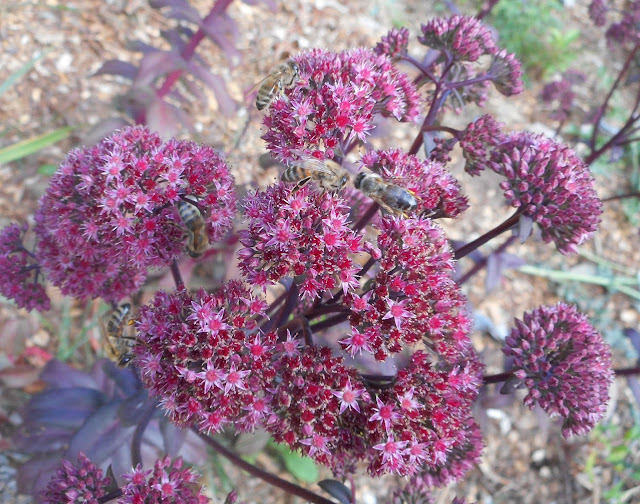 |
| Borage 6.5.14 |
No new photos today. I puttered as much as my energy allowed.
Cleared up about 50 sq foot area in fig row, that I covered with black plastic last fall, to kill grass. Now it's apparent the area was used by previous owners to dispose of fireplace ash. The grass and weeds were thick so apparently not too toxic. In the center of that area, I have already planted a start of "King" fig. In the cleared portion, I smoothed with garden rake and scattered
borage seeds for bee forage.
Borage grows rampantly. Big lush, muscular, drought tolerant plants. The honeybees and bumblebees both love it. This is a much larger area, compared to last year's few borage plants.
I uncovered the rest of the killed grass. That area needs some rain for softening, then some more borage seeds.
Between the fig trees in the row, I've laid down plastic to kill grass. Each section is about 25 square feet. I want to use each section for bee forage.
 |
| Borage with honeybee. 7.5.14 |
Based on last year's results, other great bee forage plants include
Phacelia "Bee friend", and
Dutch clover. Last year Dutch clover took over much of the yard. It is not visible now, but I imagine when the warm weather hits, it will do so again.
I have also bought seeds for a patch of
Crimson clover, and a patch of
Agastache. It's not a huge increase in the size of the bee forage area, but bigger than last year and with some more experiments. All organic, no pesticides, no neonicotinoids, no round-up, just nature.
 |
| Borage. 7.5.14 |
I have also increased the amount of
Chinese chives - another flower the bees love to forage. Being perennial, all I need to do is save seeds and sow them. Any that grow, are in addition to the existing clumps.
 |
| Borage with bumblebee. 7.5.14 |
 |
| Dutch Clover with honeybee. 7.5.15 |
 |
Phacelia tanacetifolia "Beefriend" 6.22.14
|
In addition to clearing that area, I planted a
mini-dwarf Jonagold apple tree that I grafted last year, using sucker from rootstock of another minidwarf tree and scion from the top. This is in a perennial, shrub, and herb border. They are more ornamental than useful, but again, some bee forage, and a few apples should result.
I planted some
Egyptian Walking Onions that were lying around sprouting.
 |
Phacelia tanacetifolia "Beefriend" 6.22.14
|
|
I provided the last pre-spring nitrogen boost for young trees in the mini-orchard / food forest. The trees that benefited were: Two
sweet cherries; 2 years old. One
North Star tart cherry. 2 years old. Newly planted
American persimmon, Yates; and 2 year old
Nikita's Gift and
Saijo persimmons. The Saijo might be a mistake - near bearing size and I read nitrogen boost can call fruit fall. All three of the three-year-old
pawpaws.
Hollywood plum, 1 year old from cutting.
None of the plums got nitrogen boost, none of the peaches - those grow too rampantly as is, and are bearing size. Rule of thumb for me - if bearing size, and last year's growth was more than a foot, then the extra nitrogen is probably not needed. The plums grew more than 2 feet, and the peaches grew 2 to 3 feet, last year. Ditto for
Montmorency cherry.
There was some left over, so all of the fig trees in the fig row, south of the house, got nitrogen boost too.
"
Nitrogen boost" is euphemism for
pee-cycling, or Urine Fertilizer. In this case, I used 1:4 dilution. One 1 liter, diluted, was watered in around each of 3 trees.
It's an early Spring. Plum and peach buds are nearly open. I hope we don't get a hard frost when they are susceptible. If we do, we do.
Still anxiously awaiting Raintree nursery order and scion from Fedco. Maybe end of the month.




























